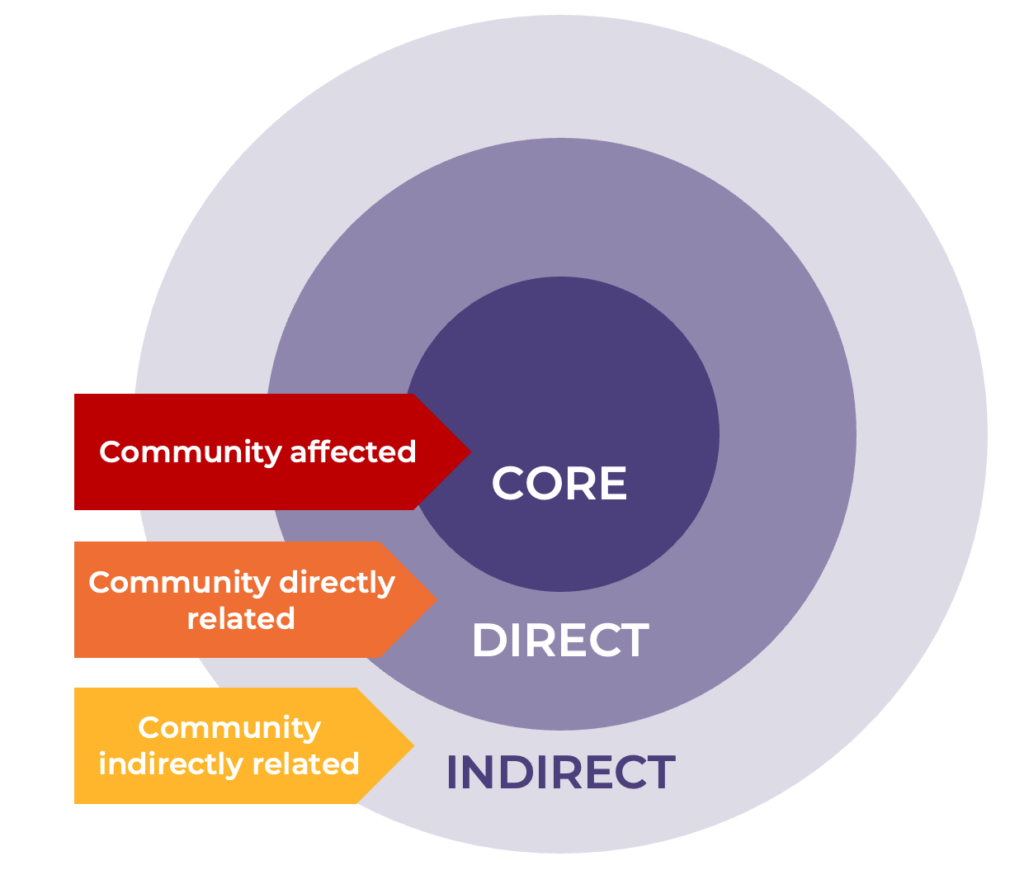Actor Mapping
Mapping actors is a critical step in understanding the network of individuals, groups, and organizations that are affected by or have an interest in the issue at hand.
Our actor map is a dynamic tool that charts the relationships between various players and the problem we’re addressing. It’s a resource we’ll use throughout the campaign for various reasons. For instance, understanding the emotional connections among actors, such as survivors and their communities. Equally important is identifying political actors who could be allies or adversaries, as well as mapping out research landscapes. Mapping these relationships is essential to the campaign and, as always, is a process that evolves over time.

*Note: you might want to do different types of actor mapping: emotional mapping, political mapping, support mapping
Let’s take a dive into the specific actors:
- Core: people directly affected by the problem. In the example of Case Study #Abolish 522 it would be the women (either actual victims or potential) affected by this article and gender-based sexual violence.
- Community directly related: are the people who have a direct impact on the topic but are not the core affected by it. The case study might be the family of the survivors, the perpetrators, and community leaders that have a direct relation to the victims.
- Community indirectly related: are the organizations or institutions that have an interest in the topic, for example, other NGOs working on the topic, community leaders, specific governmental departments, media, etc.
